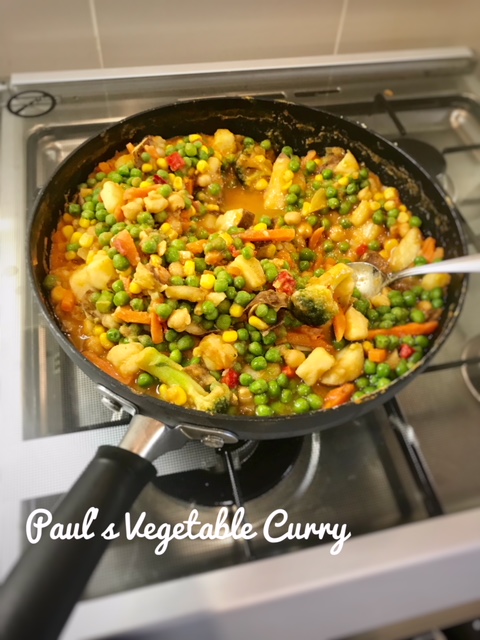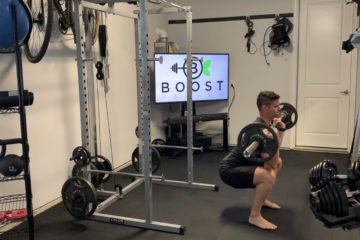
- Food Journaling
Keeping a food journal is one of the simplest, yet most powerful, methods of gaining insight to your overall health. If done properly, it can uncover nutrition habits that may be negatively affecting your health, or possibly point to a particular food or tactic that is working in your favor. There are lots of different methods and tools for food journaling. You can be very extreme and measure out every gram of food, count each calorie, and log everything into a journal or app. This is a tedious, yet effective method, to understand exactly what you are taking in and whether or not you are creating a calorie deficit, based on your activity level and basal metabolic rate. If you have never looked closely at your nutrition intake, this type of quantitative analysis can be very helpful, even if you just do it for a few days to get rough idea. A 2008 study done by Kaiser Permanente found that individuals who keep a food journal lose 2 times as much weight as those who don’t.
Another method to keeping a food journal is tracking more of the qualitative data that you note with you nutrition intake. This would include how you feel before and after you eat, duration of the meal, whether or not you were hungry when you ate, if your food habits are different based on who you are with, picture of the food, time of day, how long before or after exercise your meal was, etc. I would recommend using a cloud app to house your journal entries as it will allow you to make updates anytime and anywhere as well as add pictures of your meal and add other data points such as heart rate variability score, workout performance, etc. My personal preference is Evernote. Evernote is a well-known productivity app that allows you to make lists, add images, scan documents, etc. and organize everything in a meaningful way. Since you can log in from your smartphone or desktop computer you can easily update on the fly as you eat a meal, get a new idea, or check something off your list. I personally use it for tons of stuff like journaling, lists for grocery store and to-do’s, new ideas I want to capture, recipes, random stuff I want to remember, etc. It is nice not to waste brain space on things that you can quickly access in the palm of your hand. You can download Evernote here for free.
A food journal was imperative to my success when I first switched to a plant-based diet. Here is the link to the post with that full story if you are interested.
Basically I was really struggling with stomach discomfort, pain, and bloating. I basically went into elimination mode, getting rid of animal products, soy, gluten, and even FODMAPs. FODMAPs, if you are not familiar, are basically types of carbs that pull water into your digestive system when passing through and can also ferment in your gut which can cause pain and bloating as you might imagine. A study done in the Gastroenterology Journal in 2014 showed that individuals with Irritable Bowel Syndrome had relief when they removed FODMAPs from their diet.
When you do an elimination nutrition plan like this, keeping an accurate and detailed food journal is critical. The idea is to be extreme and eliminate any possible foods that might be of some sort of intolerance. Once your gut calms down you can start reintroducing foods back into your diet. If you have a recurrence of stomach issues you should be able to quickly identify it with your journal notes. Thanks to careful journaling and awareness I was able to narrow down my intolerances to soy, animal products, and occasionally gluten. As soon as I removed these from my diet I saw dramatic improvements in my gut health, body composition, energy, skin health, and overall demeanor. Eventually I was able to reintroduce most of the FODMAPs back into my diet which was great because I was really missing apples!
No matter what your health goals are, you should keep a food journal for a few weeks. This will allow you to really tap into what nutrition is serving you best and what might be better to avoid in the future.
- Be Prepared
The old saying of “fail to plan, plan to fail” rings true with preparing your nutrition plan. Think about the times when you have made poor food decisions. I would bet that this occurred when you ran out of time and/or ran out of food to make the healthier choice. I know that is certainly the case for me. Whether it is forgetting to put an ingredient on the shopping list to make that healthy meal, or running out of good food choices at a terrible time, not being prepared has happened to all of us. Thankfully there are some easy tactics that you can put in place to help avoid these situations.
Plan your meals a week in advance. This is a pretty well-known strategy and lots of folks tend to do this on Sundays to prepare for the week ahead. Planning your meals a week out might sound a little daunting and like a major time investment. I agree that it does take a little bit of time up front but it is such a wonderful feeling to have all your meals planned before you wake up Monday morning. Try setting aside some time on Sundays to plan all of your meals for the week, list all of the ingredients you will need, and get to the store to pick up any necessary items.
Stocking up on all the groceries our family needed for the week was a bit easier to do in the US where we could easily buy everything we needed in one store, load up the car with groceries, and drive them home. Here in Hong Kong it is a bit trickier as we live in a high rise building and would have to haul an entire week’s worth of groceries in 2 hands. If you have a similar situation then you likely have to make several trips to the store each week just to make the haul manageable. Even if this is the case, you can still plan out all the meals for the week and just buy what you need for the first several days in the first trip and cover the rest when you go back.
Cook in bulk. Cooking big batches of your favorite healthy dishes will ensure you have leftovers that you can use for upcoming meals that week. I love to cook big batches of vegetable curry and vegetable stew. I will share my recipes for these in a future post. I like to fill our biggest pots and pans to the brim and make as much food as possible to eat over the next few days. Soups, stews, and curries are very easy to reheat. My mom always has said that stews taste better the second and third day because all the spices and ingredients have a chance to blend together more thoroughly. I drive my wife a little crazy with this, but I am fine eating the exact same meal 3 times in the same day and then will do it again the following day. I am aware that most folks probably don’t like to do this so you would want to plan accordingly and cook several different dishes in bulk at a time to give some variety. Either way you will have a large batch of healthy food on the ready, that you enjoy, and this is very helpful. The excuse of eating something unhealthy because you don’t have another option is eliminated.
Have a backup plan. We all get busy and have unexpected things pop into our lives. Having an easy to make, portable snack is a must. I have a few homemade plant-based bar recipes that work great and I will share those in a future post. Sometimes you may run out of your homemade healthy snacks and having a commercial option as part of your backup plan is wise. One bar I like are the Zing protein bars. They are Vegan, Soy Free, Gluten Free, Non GMO, and use Plant-Based Protein. They are also fairly easy to find here in Hong Kong which is great. You can find them on Amazon here.
Larabar is another one of my favorites. They are so simple using dates as their base and just a few other natural ingredients. Most of the flavors are Gluten-free, non-GMO, vegan, and soy-free as well. Here is a link to them on Amazon if you are interested.
Keeping things simple with something like a bag of whole cashews and a banana is always a great option too. You could also intentionally skip a meal which brings me to my next tip…
- Intermittent Fasting
Intermittent fasting has become a favorite topic in the wellness community in recent years and for good reason, it seems to work well for most people and has numerous benefits. According to a study in the Journal of the International Society of Sports Nutrition, one surprising benefit is that intermittent fasting is just as effective as daily calorie restriction for weight loss.
For those of you who are not big fans of counting every single calorie that you put in your body this should come as welcome news. Another major benefit of intermittent fasting, according to a study in Nutrition Reviews, is that individuals lose body fat and maintain muscle better on intermittent fasting plans than daily calorie restriction programs. Sorry, that is strike 2 for calorie counting!
This is a heavily researched topic and there are many different advantages to intermittent fasting. I will include one more, that might be the most exciting and important of all – a longer life! According to a study in Redox Biology, intermittent fasting has been shown to improve the body’s ability to deal with stress and increases longevity.
I think reduction in stress and improving overall health for the long term is certainly something we can all consider as valuable. Now that I have, hopefully, gotten you all excited about intermittent fasting let’s take a look at some of the more popular types. Yes there are numerous methods, so hopefully one of them suits your lifestyle.
Overnight fasting for 12-16 hours is one type of intermittent fasting. It is as easy as it sounds, where you simply wait 12-16 hours from your last meal the night before until your first meal the following day. This type of fasting is a good one for beginners as you spend much of the fasting period sleeping, so it makes it more tolerable. I have personally been doing this method for several years now and it seems almost effortless, like I am on autopilot. I make note of what time I eat for the last time each night, let’s say it is 8pm, then I would wait until at least 8am the next morning to eat again. I can actually usually make it until 10 or 11am to get a 13 or 14 hour fast without much difficulty. In addition I do cardiovascular exercise, like biking or running, on many of the mornings in a fasted state and feel great. After a certain period of time your body adapts to using fat for energy instead of glycogen and you become a very efficient machine.
Another popular type of intermittent fasting is the 5:2 fast. This method has the individual fasting 2 days per week, where they would only eat 500-600 calories, and the other 5 days would be normal eating. While this is a very effective method it certainly requires a different type of discipline than an overnight fast. Having only 500-600 calories in a 24 hour period may be too difficult for some folks. I suppose the thing that may keep someone going on this type of plan is that they would only have to do it 2 times per week. For me personally, the overnight fast is something I can implement each and every day, so it becomes part of my routine and is easy to manage.
Perhaps the most intensely researched fasting type is the 24 hour fasting method. This one is as simple as it sounds where the individual would fast for a full 24 hours without food. You can, and should, have water of course. Black coffee and tea are also ok during any of the fasting types but you need to avoid adding any creamers or sugar to these so you remain fasted. Because the 24 hour fast is so difficult, most individuals only do this once per week or even once per month. It is not necessarily the first method I would suggest for someone who is a beginner with fasting.
One more type is the random or occasional intermittent fasting method. With this method you skip a meal or two when you get busy, are traveling, or don’t have any healthy or appropriate options. Maybe you are on a plants-based nutrition plan and are on a long flight and they don’t have a vegan meal option. Rather than picking through a bag of peanuts maybe this is an opportunity to just skip the meal and fast instead. Or perhaps you didn’t make it to the grocery store recently and have run out of healthy options. First, see tip number 2 above. Then consider doing a fast until you are able to get some healthy food options. Another example is you might be stuck in an all-day conference and the food that is catered is not healthy in the least. This might be an opportunity to fast instead of giving in to the unhealthy options.
- Know Your Second Brain
Exciting new research has been happening in the last decade or so that is exploring an area of our body being coined as our “second brain”. Based on how many neurons reside there and how much communication occurs, our gut is being given credit as a smart organ. An article in Scientific American, by Adam Hadhazy, shares how research has found that our guts contain about 100 million neurons, which is more than our spine, and 90 percent of the information these neurons contain is sent to our brain. This area of the gut, also known as the enteric nervous system, appears to sometimes be responsible for our mood, stress, and feelings. It seems that research is just scratching the surface in understanding what is happening inside our gut and how it communicates with our brain. It is clear, however, that taking care of your gut health is more important and complex than we ever thought before.
Inside our gut is an entire ecosystem of bacteria. The balance of this ecosystem is very important and it can be negatively affected by antibiotics, stress, and food intolerances for example. One way to help create a healthy ecosystem of bacteria in your gut is to eat foods that are naturally probiotic. Probiotic foods stimulate growth of good bacteria in your gut. Examples of probiotic foods include high quality yogurt, sauerkraut, dark chocolate, pickles, and kimchi. According to an article by Erin Zagursky on the William & Mary website, a study showed that people who ate probiotic foods had decreased social anxiety. This is another piece of evidence that there is likely some serious communication between your gut and your brain!
Of all the probiotic food options, dark chocolate is by far my favorite of these examples. Now we are talking about the real deal dark chocolate though. None of that milk chocolate stuff! I look for dark chocolate that has minimal ingredients and is at least 80% cocoa. One of my favorites is this one by Alter Eco. I has only 3 ingredients – cocoa, cocoa butter, and sugar. I also like that it is vegan, Non-GMO, is 85% cocoa, and tastes awesome. Here is link to it if interested.
The good news is that dark chocolate actually has an added benefit of being an anti-inflammatory! According the American Chemical Society website, Dr. John Finley, with Louisiana State University, found in his research that when dark chocolate is digested in your gut it is fermented and releases compounds that are anti-inflammatory and when the body absorbs these compounds they reduce inflammation in your cardiovascular tissue and thus decrease risk for stroke in the long run.
- Five To Stay Alive
I know this will be shocking to everyone…fruits and vegetables are good for you! Alright you probably already new that. But now we have a massive study which was completed very recently in 2017 that shows fruits and vegetables can extend our lives! According to a study published in The Lancet by Miller et al., 3-4 servings of fruits and vegetables per day reduces mortality rate. As mentioned earlier this was a huge study. It looked at 18 countries, 7 geographic locations, and low, middle, and high income levels. It really gives us some nice evidence that a diet rich in fruits and vegetables is a very wise investment in your health.
Are you getting enough? According to the U.S. Dietary Guidelines you should be getting 3 cups of vegetables and 2 cups of fruit each day. I like the fact that we aren’t being told in “servings” anymore because it was too confusing to everyone. Different servings for different fruits and veggies, blah, it was a mess. Bringing things full circle from the fruit and veggie study above, 3-4 servings of fruit is approximately equal to 5 cups so it is nice to see those data line up. I think most people can picture a measuring cup and have a rough idea if they are getting enough fruits and veggies based on that. You could always measure it out for a day or two to confirm you are getting enough, or possibly confirm you are not. One thing to note within the requirements is that green leafy vegetables, such as kale, require 2 cups to equal 1 cup. Also dried fruit has a ½ cup equaling 1 cup because of concentration. Those are the only exceptions so it is pretty easy. Do your best to have lots of variety in your fruits and vegetables. One way you can do this is to just select a variety of colors. For example you may choose orange pumpkins, red peppers, green broccoli, yellow squash, blue blueberries, orange oranges… you get the idea.
I hope you are inspired to implement 1 or more of these 5 tactics into your nutrition plan if you are not already doing so. Don’t be afraid to try new things. Scott Adams was quoted as saying “Creativity is allowing yourself to make mistakes. Art is knowing which ones to keep.”
If you are already using some of these strategies or have questions about anything please comment in the blog. I would love to hear from you!
Podcast: Play in new window | Download
Subscribe Apple Podcasts | Google Podcasts | RSS



